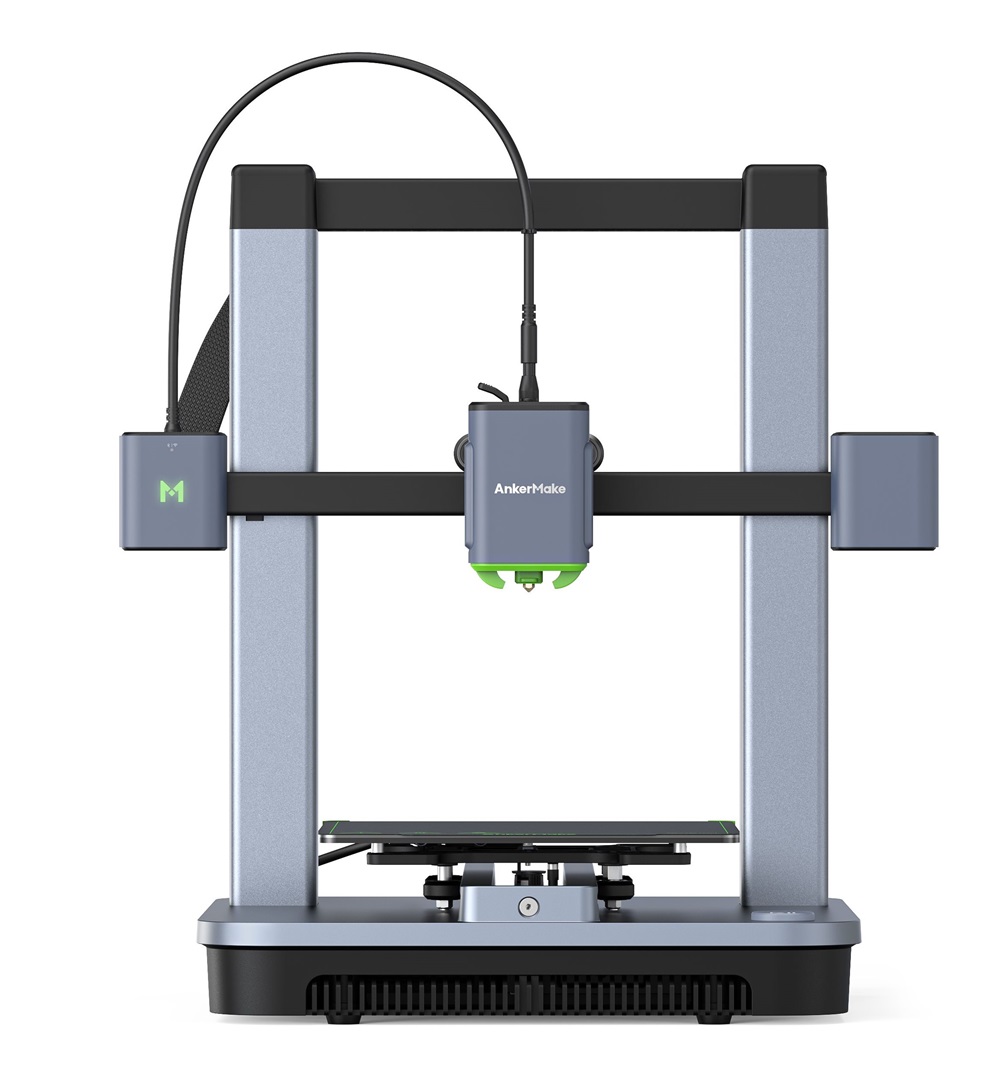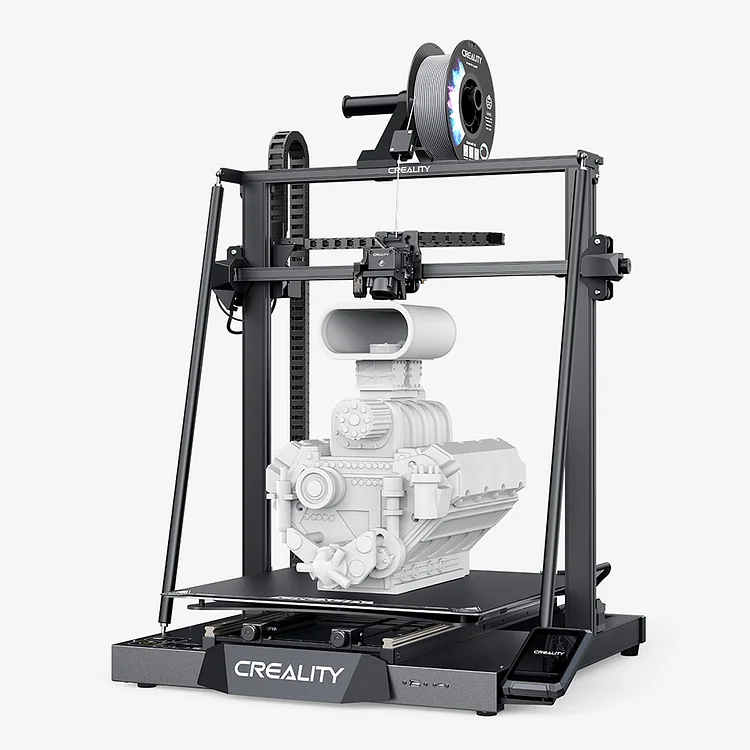Compare M5C vs CR M4
Comparison between the best 3D printers
Choose the best 3D printer at the best price. The cheapest 3D printers are here.
Buy a 3D printer here with 3D Fila.
 |
 |
|
| Model | M5C[BUY M5C] |
CR M4 |
| Printing Material | Filament | Filament |
| Buy Filament for AnkerMake M5C | Buy Filament forCreality 3D CR M4 | |
| Estimated price | $399,00 | $1099,00 |
| Manufacturer | AnkerMake | Creality 3D |
| Release Year | 2023 | 2023 |
| Print Volume [mm] | 220x220x250 | 450x450x470 |
| Printer Size [mm] | 466x374x480 | 655x700x865 |
| Weight [kg] | 9,6 | 23 |
| Power Loss Recovery | YES | YES |
| Enclosed printer | NO | NO |
| Bed Leveling | Automatic | Automatic |
| Filament End Sensor | YES | YES |
| Bed type | Heated | Heated |
| Power supply system | Direct Drive | Direct Drive |
| Standard nozzle | 0,4 | 0,4 |
| Maximum Nozzle Temperature [°C] | 300 | 300 |
| Maximum Bed Temperature [°C] | 100 | 100 |
| Maximum printing speed [mm/s] | 500 | 180 |
| Filament holder | YES | YES |
| Camera for supervision | NO | NO |
| Recommended filaments | PLA, PETG, TPU, ABS, PA, PLA-CF, PETG-CF, PA-CF | PLA, PETG, TPU, ABS, PLA-Wood, PA, PLA-CF |
| Recommended slicers | AnkerMake Studio (macOS, Windows), Simplify3D, Ultimaker Cura, PrusaSlicer | Cura, Simplify, Slic3r, IdeaMaker |
| Maximum Resolution [mm] | 0,1 | 0,1 |
| Processor | ||
| Display | Display touchscreen 4,3'' | |
| Power Supply | 350 W | 110/220V / 800W |
| Connectivity | Wi-Fi, USB-C, Bluetooth | SD / USB / Wi-Fi |
| Operating systems | Windows, Linux e Macbook | Windows, Mac, Linux |
| Date of registration in the system | 2024-09-11 | 2023-02-06 |
| Release date | 2023 | 2023 |
| Extra features | The AnkerMake M5 printer stands out for its impressive print speed, reaching up to 500mm/s. It features AI print monitoring, an integrated camera for creating timelapses, auto-leveling bed with pressure sensor, direct extruder, flexible PEI-coated build plate, and Wi-Fi and USB-C connectivity. Assembly is quick and easy, and the printer is designed to deliver high print quality and ease of use. | The Creality CR-M4 printer stands out for its easy assembly and automatic table leveling. With dual-gear extruder technology and direct drive, it ensures quality prints. It offers Wi-Fi and LAN connections for easy file sending. Its large construction volume of 450x450x470 mm allows for bold projects. It has linear rails and a high-power Y motor, supporting up to 30 kg on its plate. The innovative design includes an efficient cooling system and a removable screen controller, optimizing usability and comfort during printing. |
| Support for multiple colors and materials (AMS and CFS) | NO | NO |
Notes * |
||
| Cost-benefit | 7 / 10 | 6 / 10 |
| Hardware | 2.8 / 10 | 2.8 / 10 |
| Tela | . | . |
| Print volume | 3 / 10 | 4 / 10 |
| Performance | 4 / 10 | 1 / 10 |
| [BUY M5C] |
Conclusion |
| In comparing the AnkerMake M5C and the Creality 3D CR-M4, both printers are competent choices released in 2023, but they cater to different user needs and preferences. The AnkerMake M5C is a more budget-friendly option with a compact print volume, making it suitable for hobbyists or those with limited space. Its standout features include an incredibly fast maximum printing speed of 500mm/s, automatic bed leveling, and easy connectivity options like Wi-Fi and USB-C. The printer's lightweight design, quick assembly, and high print quality also contribute to a favorable cost-benefit ratio, appealing to users who value speed and usability over extensive build volume. On the other hand, the Creality 3D CR-M4, while more expensive, offers a significantly larger print volume, enabling users to take on bigger projects. It features robust build quality with dual-gear extruder technology and efficient cooling systems, which enhance its printing capabilities for more demanding tasks. Despite its slower maximum speed, the CR-M4 incorporates features like easy assembly and automatic leveling, which are vital for consistent quality. It is thus ideal for those who need to tackle larger prints or require a more professional-grade machine. In conclusion, the choice between these two printers ultimately depends on individual printing needs and budget. The AnkerMake M5C excels in speed and ease of use for smaller projects, while the Creality CR-M4 offers superior volume for larger, more intricate designs, albeit at a higher cost. Users should consider their specific requirements, such as print size, project frequency, and budget, when making a decision. |

